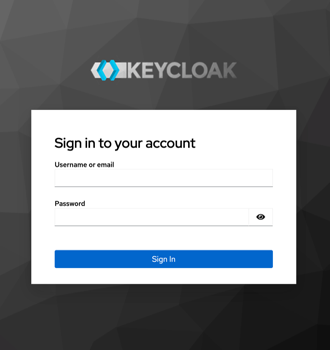🚀 Join Us Live! Want to see this setup in action? We’ll be showcasing the full installation and implementation of Local LLM for FileMaker live at our upcoming CFDG meetup. Don’t miss this hands-on session where you can ask questions and see everything in real time.
1. Create Ubuntu Server
Below are instructions for creating an Ubuntu 24.04 server using AWS EC2. These instructions should be similar for other cloud services like Microsoft Azure.Launch a New EC2 Instance
- In AWS EC2, click Launch Instance
- Select the following options
- AMI – Ubuntu 24.04 (x86)
- Instance Type – t3a.large (or your preferred size)
- Key Pair – Select or create a new key pair
- Subnet – Choose an appropriate subnet (e.g., us-east-1c)
- Security Groups – Ensure SSH (port 22), HTTP (port 80), and port 8080 are open
- Storage – ~30GB recommended
- IAM Role – If you have an instance profile with needed permissions, select it here (optional but recommended)
- AMI – Ubuntu 24.04 (x86)
Create and Associate an Elastic IP
- Reserve a new Elastic IP in AWS
- Associate it with your new EC2 instance
- In your DNS settings, create an A record pointing to the Elastic IP
Connect to the EC2 Instance
Use AWS Systems Manager Session Manager or SSH2. Update Ubuntu
After connecting, update your instancesudo -isudo apt update && sudo apt upgrade -ysudo apt dist-upgrade -ysudo apt autoremove -ysudo shutdown -r now3. Download Open Source LLM Files
📌 Important – If you’ve upgraded from FileMaker Server v20, ensure you have the latest FileMaker Server v21 version of the Open Source LLM files. 🔗 Download Open_Source_LLM.zip Download directly to your servercd ~sudo apt install zipsudo wget https://kyologic.com/wp-content/uploads/2025/02/Open_Source_LLM.zip -O /home/ubuntu/Open_Source_LLM.zipsudo unzip Open_Source_LLM.zipsudo chown -R ubuntu:ubuntu /home/ubuntusudo chmod -R a+rx /home/ubuntusudo rm Open_Source_LLM.zipsudo rm -r __MACOSXscp -i "/local/path/to/keypairfile" -r /local/path/to/Open_Source_LLM ubuntu@your-server-ip:/home/ubuntu/4. Install Certbot for SSL
Use Certbot to manage SSL certificatescd ~sudo snap install core && sudo snap refresh coresudo snap install --classic certbotsudo ln -s /snap/bin/certbot /usr/bin/certbotsudo shutdown -r now5. Configure Firewall
cd ~sudo ufw allow sshsudo ufw allow 80/tcpsudo ufw allow 8080/tcpsudo ufw enable6. Obtain an SSL Certificate
Ensure DNS is pointed to your server’s IP before running the following Note – Replace llm.mydomain.com with your domain name.sudo certbot certonly --standalone --preferred-challenges http -d llm.mydomain.com --dry-runsudo certbot certonly --standalone --preferred-challenges http -d llm.mydomain.comsudo systemctl enable snap.certbot.renew.timercd /etc/letsencrypt/renewal-hooks/presudo nano pre-hook.sh#!/bin/bash
# Open port 80
ufw allow 80/tcpsudo chmod +x pre-hook.shcd /etc/letsencrypt/renewal-hooks/postsudo nano post-hook.sh#!/bin/bash
# Close port 80
ufw deny 80/tcp
#Reboot Server
sudo shutdown -r nowsudo chmod +x post-hook.shsudo certbot renew --dry-run7. Generate Admin PKI Keypair & JWT for Authentication
- Download Soliant’s SSH Key & JWT Tool
- Open in FileMaker
- Create a new record
- Enter a Name & # of expiration days
- Press the Generate Keypair & Generate JWT buttons
sudo mkdir /etc/letsencrypt/auth_keysudo nano /etc/letsencrypt/auth_key/localllm.key.pubsudo nano /etc/letsencrypt/auth_key/localllm.keysudo chown -R ubuntu:ubuntu /etc/letsencryptsudo chmod -R a+rx /etc/letsencrypt8. Install Miniconda & Python Environment
Install Minicondacd /home/ubuntumkdir -p ~/miniconda3sudo wget https://repo.anaconda.com/miniconda/Miniconda3-latest-Linux-x86_64.sh -O ~/miniconda3/miniconda.shbash ~/miniconda3/miniconda.sh -b -u -p ~/miniconda3sudo rm ~/miniconda3/miniconda.shsource ~/miniconda3/bin/activateconda init --allconda create --name <name>conda activate <environment name>conda install python=3.9.18pip install jwt && pip uninstall PyJWT && pip install PyJWTconda install -c conda-forge sentence-transformerspip install -r /home/ubuntu/Open_Source_LLM/requirements.txtsudo shutdown -r now9. Run & Test the Local LLM Server
Set environment variablessudo chown ubuntu:ubuntu /home/ubuntu/ -Rsudo chmod -R 755 /home/ubuntusudo chmod 700 ~/.sshsudo chmod 600 ~/.ssh/authorized_keyssudo shutdown -r nowexport PKI_KEYFILE="/etc/letsencrypt/auth_key/localllm.key.pub"export CERTFILE="/etc/letsencrypt/live/llm.mydomain.com/fullchain.pem"export KEYFILE="/etc/letsencrypt/live/llm.mydomain.com/privkey.pem"conda activate <environment name>python3 /home/ubuntu/Open_Source_LLM/server/fm_LLMOS_StartServer.pyc- Open Meetings_Solution in FileMaker
- On the initial layout ( Meeting Details), enter Layout Mode and remove the Layout Calculation at the bottom of the page and add the field Details_Embedding to the layout.
- Open the Script Workspace and find the Configure AI Account script
- Adjust the Configure AI Account script step
- Model Provider – Custom
- Endpoint – https://llm.mydomain.com:8080
- API key – copy and paste the JWT from SSH Keys & JWT file
- Adjust the Configure AI Account script step
- Now Navigate to the Embedding Details Data script
- Adjust the Insert Embedding script step
- Embedding Model – all-MiniLM-L12-v2
- Adjust the Insert Embedding script step
- Clear out the contents of the Details_Embedding field script
- Run the Embedding Details Data script
- Check and confirm that there were no errors and you have a new .fve file in the Details_Embedding field.
10. Automate the LLM Server with PM2
Create a pm2.io account. Enter a Bucket Name You should now see this screensudo shutdown -r nowsudo -isudo apt install npm -ynpm install -g pm2pm2 link [[Keys from PM2 Website]]shutdown -r nowconda activate <environment name>CERTFILE="/etc/letsencrypt/live/llm.mydomain.com/fullchain.pem" KEYFILE="/etc/letsencrypt/live/llm.mydomain.com/privkey.pem" PKI_KEYFILE="/etc/letsencrypt/auth_key/localllm.key.pub" pm2 start python3 --name <environment name> -- /home/ubuntu/Open_Source_LLM/server/fm_LLMOS_StartServer.pycpm2 savepm2 startupsudo shutdown -r now🚀 See This in Action! Want a live walkthrough of setting up Local LLM for FileMaker on Ubuntu? Join our Connecticut FileMaker Developers Group (CFDG) meetup where we’ll demo this setup step by step and answer all your questions! 🔗 Register here

